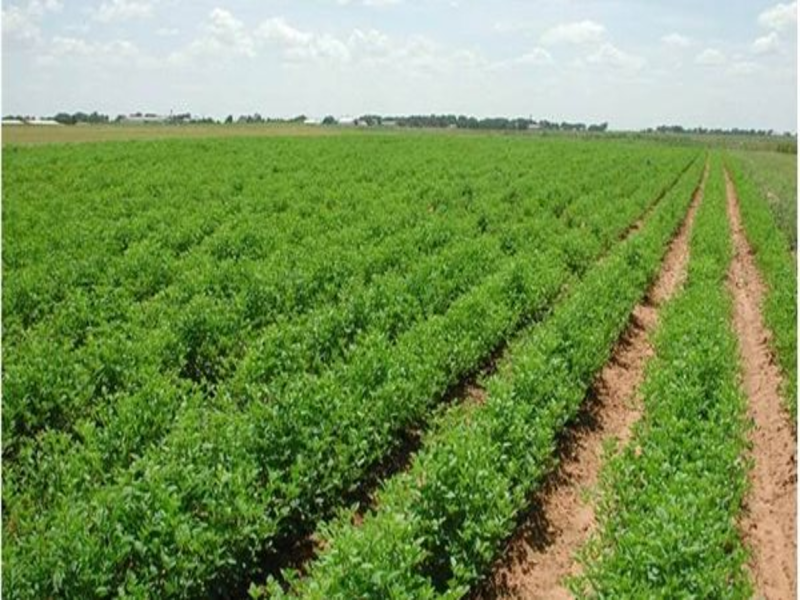الملخص:
يشهد القطاع الأول بالمغرب دينامية كبيرة، نتج عنها تحولات على مستوى الممارسات والاختيارات المتخذة من طرف الفلاح المغربي؛ تتمثل بعض هذه الاختيارات في تخلي فئة مهمة منهم عن أنماط زراعية تقليدية معروفة بمنافعها الاقتصادية الهامة وأدوارها البيئية المحافظة خلال الدورة الزراعية، لصالح زراعات أخرى أكثر ربحية وأقل جهدا. تشكل القطاني الزراعة الأكبر تضررا ضمن بنية الإنتاج الزراعي المغربي، ولعل تحول البلاد من أكبر مصدري أصناف القطاني حتى حدود سبعينيات القرن الماضي إلى مستورد لها ابتداء من التسعينات إلى اليوم، لدليل قوي على ما تعيشه هذه الزراعة من أزمة غير معلنة، تستحق الدراسة حتى يمكن فهم حيثياتها وتحليل عواملها وآثارها، عوض الاقتصار فقط -كما هو الحال في تقارير الوزارة الوصية- على إحصائيات الإنتاج ومساحة الأراضي المزروعة الخاصة بهذا النمط الزراعي.
انطلقت الدراسة الميدانية للموضوع من وصف وضعية الإنتاج الوطني من القطاني ورصد مؤشرات تطوره خلال السنوات الماضية، ومن تم تصغير مجال الدراسة (إقليم سطات) أثناء مرحلة التفسير والتحليل والعمل الميداني. وبالاعتماد على مقابلة مهندسين زراعيين وفلاحين ومسؤولين بالمندوبية الإقليمية للفلاحة بسطات، إضافة إلى تحليل مجموعة من المعطيات الإحصائية المحصل عليها من مؤسسات وطنية رسمية، تبين أن تراجع القطاني بالمغرب له ارتباط رئيسي بالعامل المناخي، حيث أن أغلبية القطاني هي قطاني مطرية. لكن المناخ وحده لا يفسر تقهقر هذه الزراعة، بل توجد عوامل أخرى لا تقل أهمية عنه، لها دور مهم في رسم المنحنى السلبي للقطاني المغربية وعلى رأسها: ضعف المكننة، جاذبية زراعات أكثر ربحية، تزايد خطر الأمراض وارتفاع كلفة الإنتاج (اليد العاملة، البذور، الأسمدة والمحروقات…) في ظل شبه استقرار في ثمن المنتوج.
الكلمات المفاتيح: زراعة القطاني؛ التراجع؛ الدورة الزراعية؛ المغرب؛ إقليم سطات.
Abstract:
Morocco’s first sector is experiencing great dynamism, which has resulted in changes in the level of practices and choices made by the Moroccan farmer. Some of these choices are the abandonment of traditional agricultural patterns by an important group known for their important economic benefits and conservation environmental roles during the agricultural cycle, in favor of other more profitable and less effort crops. Pulses cultivation is the most affected agriculture in the Moroccan agricultural production structure. Perhaps the country has been transformed from the largest exporter of pulses varieties to the borders of the 1970s into an importer from the 1990s to today, is a powerful demonstration of the undisclosed crisis of agriculture, which deserves study so that it is possible to understand its causes and analyze its factors and effects, instead of limiting only – as in the Ministry’s guardian reports – to production statistics and the area of cultivated land of this agricultural pattern.
The field study of the topic started from describing the state of the national production of pulses and monitoring indicators of its development during the past years, the field of study (Settat Province) was reduced during the interpretation, analysis and fieldwork phase, and relying on an interview with agricultural engineers, peasants and officials at the regional delegation of agriculture in Settat, as well as an analysis of a range of statistical data obtained from official national institutions, It turns out that the decline of the legume in Morocco is mainly related to the climatic factor, as the majority of the legume are rain-fed. However, the climate alone does not explain the regression of this agriculture. There are other factors that are as important as it is. Poor mechanization, the attractiveness of more profitable agriculture, the increased risk of disease and the high cost of production (labour, seeds, fertilizers and fuels). With near – stability in the price of the product.
keywords: legume cultivation; backing down; crop rotation; Morocco; Settat province.
عبد الغني بوقطب وفاطمة الزهراء واستار عبد المجيد السامي
جامعة الحسن الثاني الدار البيضاء، المغرب
Hassan II University of Casablanca, Morocco
